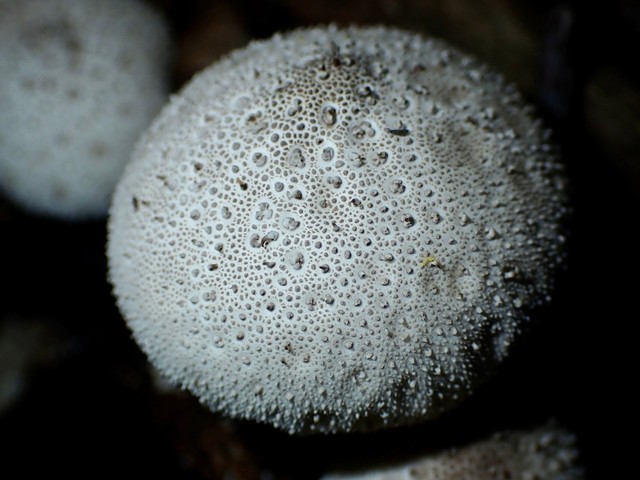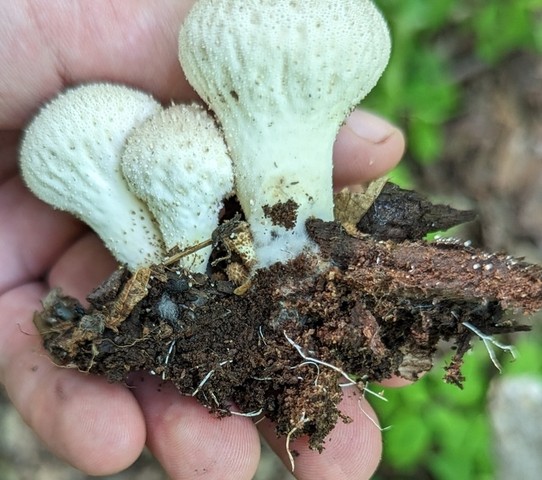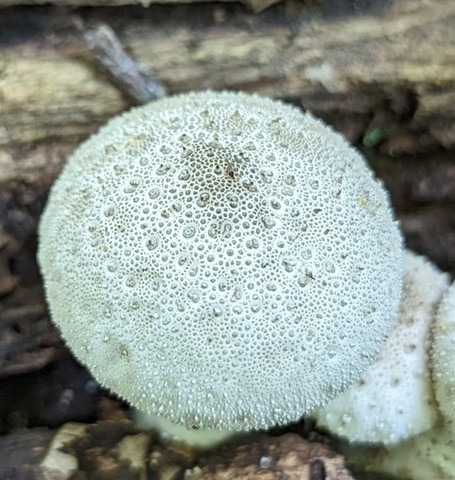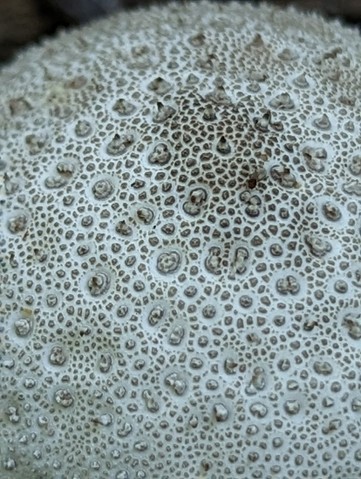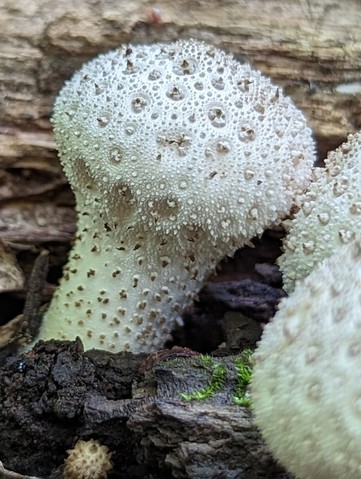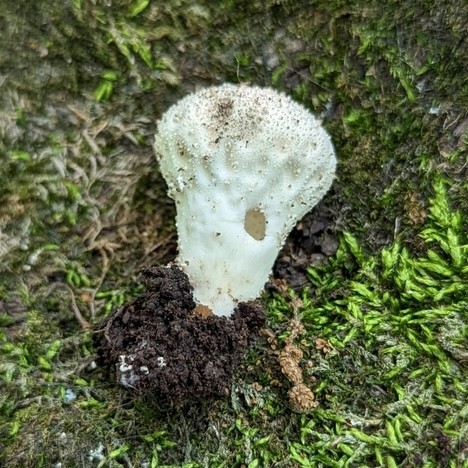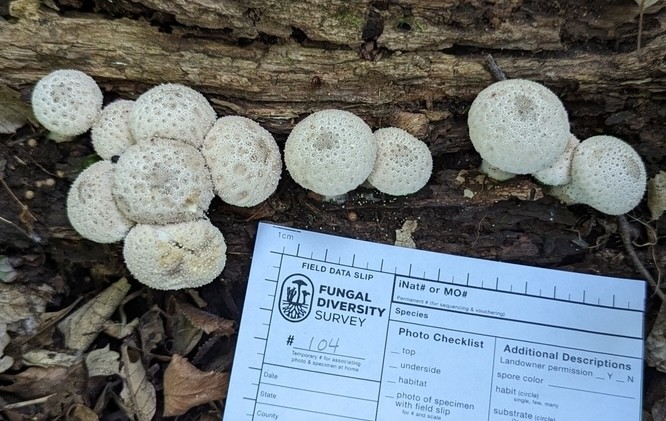Common Puffball
Lycoperdon perlatum
Life > Fungi > Basidiomycota > Agaricomycotina > Agaricomycetes > Agaricomycetidae > Agaricales > Lycoperdaceae > Lycoperdon
Description
The Common Puffball (Lycoperdon perlatum) is a decomposer of wood and can be found in the spring through fall growing from broadleaf or conifer wood. These were found growing from the remains of an American Hop Hornbeam tree at Indian Cave State Park in southeastern Nebraska. This mushroom can be distinguished from other puffballs by its triangular scales.
The fruiting body pear-shaped and is gateroid (meaning the spores are produced on the inside rather than external facing gills or pores). It is ornamented with triangular scales, that become smaller and darker towards the apex. The mushroom will eventually produce a pore at the apex, from which it will release its spores. The contents of the puffball begin white colored when young becoming brown with age as the spores mature. White rhizomorphs can be found growing through the substrate. The spores are olive brown.
Observations
June 13th, 2023 Indian Cave State Park
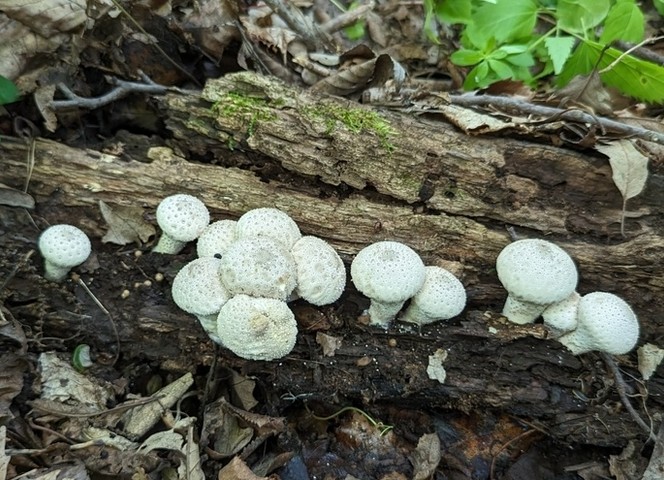
104
Growing from rotting remains of American Hophornbeam tree low east facing mixed oak/hickory woodland slope.
- Rhizomorphs present.
References
Kuo, M. (2019, February). Lycoperdon perlatum. Retrieved from the MushroomExpert.Com Web site: http://www.mushroomexpert.com/lycoperdon_perlatum.html
Created October 14, 2025 at 3:03 PM
